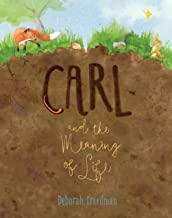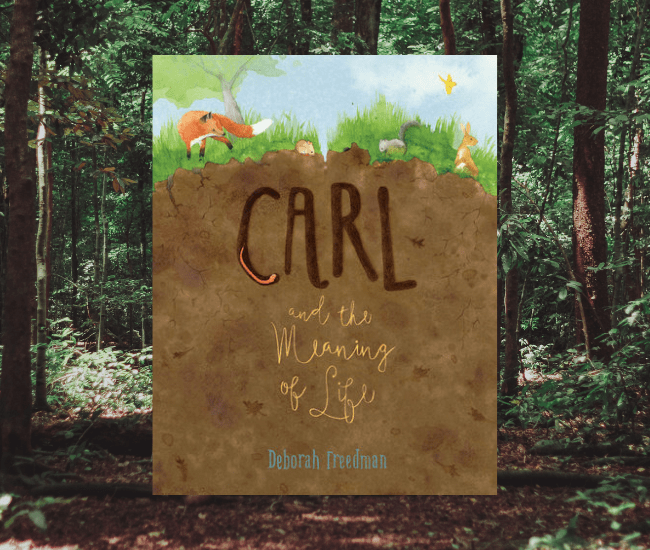Carl and the Meaning of Life by Deborah Freedman
Deborah Freedman is back with another whimsical children’s book in Carl and the Meaning of Life (Viking Books for Young Readers). This book follows a similar style as some of her other children’s books with her own beautiful illustrations and charming animal characters.
Freedman is no stranger to addressing larger, worldly topics in her children’s books, and Carl and the Meaning of Life is no exception. The main character of this story, Carl the earthworm, is struggling with the meaning of life. The story starts out with Carl doing what he always does, moving around underground, turning the different plant debris and dirt into nourished soil. One day while going about his business, Carl encounters a field mouse gathering seeds. When this field mouse prompts Carl with the question of why he does what he does, Carl sets out on a whirlwind adventure, determined to find an answer.
Carl’s journey of discovery continues when he asks a rabbit and if she knows why he does what the same thing every day. Her response surprises and confuses Carl, as she has no answers for his own question, but instead explains what she does to care for her young. This answer was not one that Carl was expecting, nor one he could personally relate to. Carl’s next few interactions with the different woodland creatures all follow the same trend. Each creature knows their purpose, but they seemed to have no connection or answer for Carl’s own duties.
During the time in which Carl is out searching for the meaning of life, something peculiar takes place in the world around him. The ground dries up, the grass recedes and many of the woodland creatures leave, all except the for a little ground beetle. The ground beetle explains to Carl that there were no more grubs to be found. When Carl checks for himself, he realizes that all his nourished, fluffy soil had transformed to hard dirt in his absence. With this vital observation, Carl knows what he has to do. Resuming his old job with fervor, he dives down into the earth and turns the hard dirt into fluffy soil. Soon enough, the grass is growing and the animals are returning to the forest. Carl realizes that he holds an important role in the ecosystem and without him, the other life forms are unable to do what they need to do to survive.
This children’s book has a few major themes that are woven into the endearing story. For one, this tale illustrates to children that all life forms, even the smallest earthworms, matter and serve a greater purpose. We see that when Carl does not do his job the other woodland creatures are unable to continue with theirs. In this way, the absence of one creature can cause an enormous negative domino effect. Thus, the importance of the earthworm also translates the importance of humans taking care of the place in which earthworms live. This story also touches upon the meaning of life. At some point in every child’s life, one will wonder what they wish to do, why they should do it and if it matters in the grand scheme of things. Carl helps show children that they are not alone in feeling unsure in their path, and most vitally, impresses the belief at a young age that everyone has importance and meaning.
Freedman did a wonderful job creating a story that is both entertaining and informational for young readers. She is able to tackle tough, relevant topics in an easily digestible fashion with breathtaking illustrations.
Carl and the Meaning of Life is now available for purchase.
Buy this Book!
Amazon




